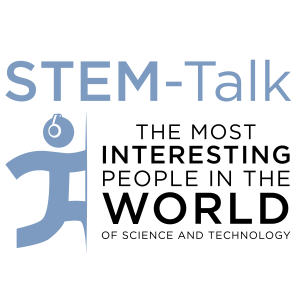
Episode 70: David Sabatini on the discovery of mTOR and its role in disease, longevity & healthspan
 2018-08-14
2018-08-14
Download
Right click and do "save link as"
Peter Attia, who was our very first guest on STEM-Talk, describes David Sabatini’s discovery of mTOR as one of his two favorite science stories.
Today, Dr. David Sabatini joins us and gives us a first-hand account of how his research into rapamycin in 1994 as a graduate student led him to the discovery of mTOR, which we now know is a critical regulator of cellular growth.
Our interview with David delves into his continuing research into mTOR, which has led to promising opportunities for the development of new treatments for debilitating diseases such as cancer, diabetes and neurological disorders. He also discusses mTOR’s role in healthspan and lifespan.
David is a molecular cell biologist who, according to Reuters News Service, is on the short list for a Nobel Prize. David is on the faculty at MIT and heads up the Sabatini Lab at the Whitehead Institute.
In today’s episode, we discuss:
Rapamycin, a macrolide antibiotic discovered in the soil of Easter Island
David’s discovery of mTOR while a grad student at Johns Hopkins
mTOR’s role as one of the major growth pathways in the body
mTOR’s role as a nutrient sensor
How mTOR inhibiton has become one of the hottest topics in longevity research
mTOR’s role in diseases, especially its connection to cancer
The role of RAG GTPases as key mTOR mediators
Protein intake and downstream mTOR activation
Research into ketogenic diets effect on longevity and healthspan
Whether David would take rapamycin as a means to enhance his longevity
And much, much more
Show notes:
[00:3:32] David talks about growing up in New York and having parents who immigrated to the United States from Argentina.
[00:4:00] Dawn asks what David was like as a kid.
[00:4:59] Dawn asks David about his decision to attend Brown University.
[00:5:56] David talks about his decision to become a scientist and the time he spent in the lab of Al Dahlberg
[00:6:53] Ken mentions that after his time at Brown, David headed off for Johns Hopkins to work in Sol Snyder’s lab, a professor known particularly for the work he and his colleagues did on the opioid receptor. Ken asks what drew David to Sol’s lab.
[00:8:25] David talks about how as graduate student at Johns Hopkins in the M.D./Ph.D. program, he began trying to understand the molecular mechanism of rapamycin, a macrolide antibiotic discovered in the soil of Easter Island. Rapamycin was known as a potent antifungal, immunosuppressive with anti-tumorigenic properties. That research led David to the major discovery in 1994 of the protein to which rapamycin binds, now referred to as the mechanistic target of rapamycin, or mTOR.
[00:11:46] Dawn asks David to give a high-level definition and overview of what mTOR does.
[00:13:44] Dawn asks why the “m” in mTOR went from standing for “mammalian” to “mechanistic.”
[00:14:11] Ken mentions that we now know mTOR is one of the major growth pathways in the body that is responsible for growth in both a positive sense and a pathologic sense. He goes on to mention that mTOR acts as a major switch between catabolism and anabolism, and asks David to explain why both of these processes are essential for survival.
[00:16:10] Dawn asks how the two different mTOR protein complexes, mTORC1 and mTORC2, differ with regards to their activation and downstream function.
[00:17:40] Dawn asks David about his decision to join the faculty atMIT and embark on a research-focused career there, starting his own lab at the Whitehead Institute rather than following the clinical path arising from his M.D.
[00:20:50] Ken asks about how nutrients and other inputs are sensed and integrated by the mTOR complexes, given how one of the most fascinating aspects about mTORC1 is its role as a nutrient sensor.
[00:23:46] Ken asks why both nutrients and growth factors are required to activate mTORC1.
[00:25:54] Dawn mentions her interest in the connection of mTOR to aging,
view more
More Episodes
0123456789
Create your
podcast in
minutes
- Full-featured podcast site
- Unlimited storage and bandwidth
- Comprehensive podcast stats
- Distribute to Apple Podcasts, Spotify, and more
- Make money with your podcast
It is Free
- Privacy Policy
- Cookie Policy
- Terms of Use
- Consent Preferences
- Copyright © 2015-2024 Podbean.com




